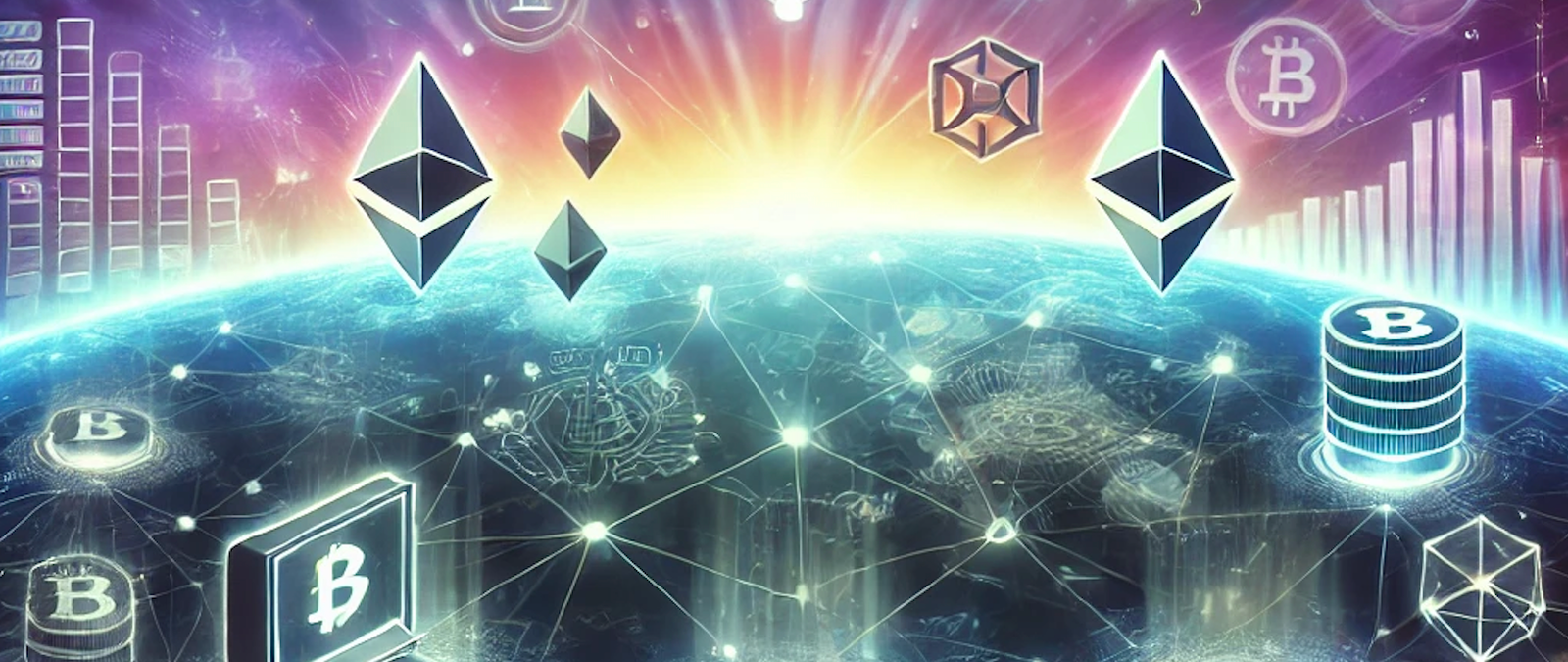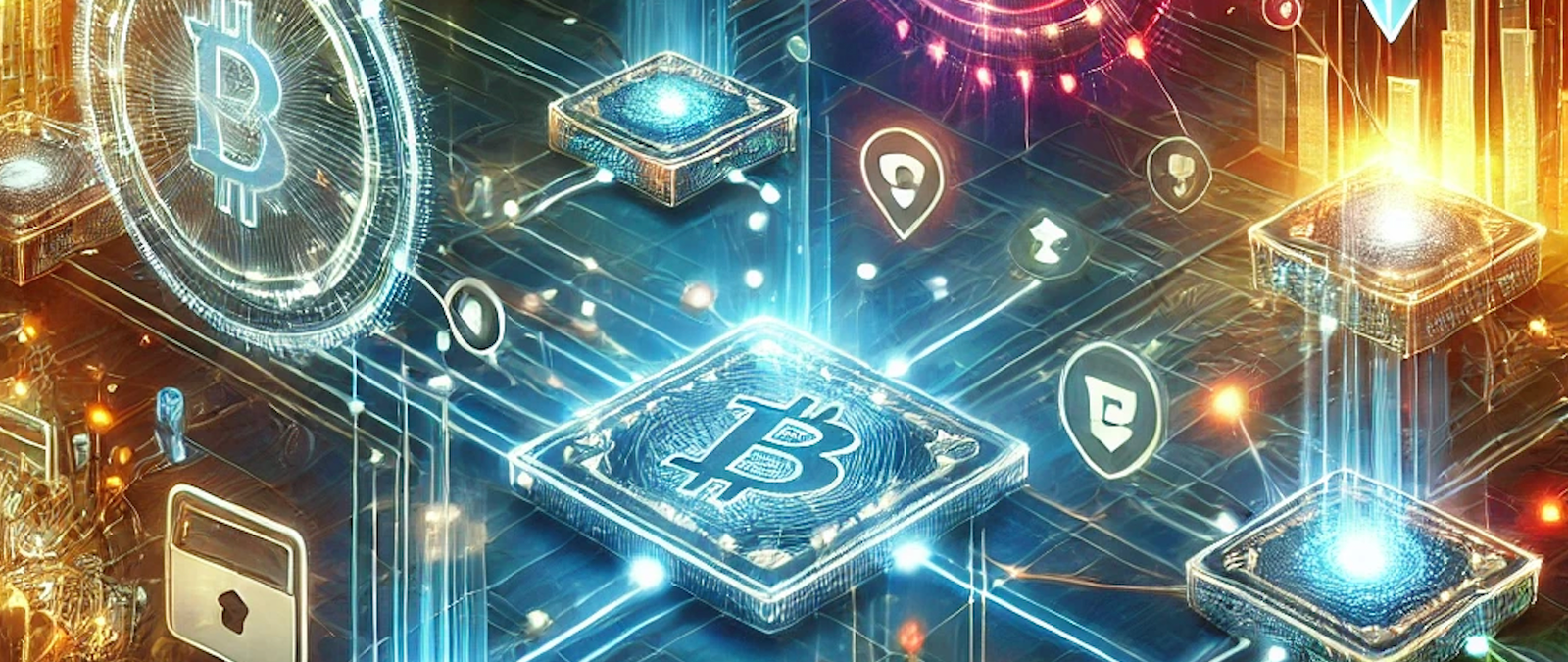

If you're like me and have been curious about different types of cryptocurrency and opportunities, you've probably heard or seen the term “DeFi” somewhere. So, what is DeFi? DeFi stands for Decentralized Finance. It represents a rapidly growing financial sector based on blockchain that is becoming an alternative to traditional financial systems we have seen so far. Unlike traditional banking systems we are familiar with, DeFi operates without intermediaries, using blockchain technology and smart contracts to provide modern financial services that are available to anyone with an internet connection. In simple words – Decentralized Finance has an innovative approach to finance, allowing users to lend, borrow, trade, and earn interest on assets, like cryptocurrency, without a bank or financial institution's involvement. DeFi is completely changing the traditional approach of how we think about money, providing users with greater transparency, accessibility, and control of assets.
DeFi at its core is built on blockchain technology, the same tech system that powers cryptocurrencies like Bitcoin and Ethereum. But DeFi takes things to the next level by creating an entire blockchain ecosystem of financial services that are decentralized.
One of the key elements of Decentralized Finance is smart contracts, which are self-executing contracts with the terms of the agreement directly written into code, which is sent into the blockchain. Remember the hustle it required to get the final approval from the bank to get the loan? With DeFi, you don't need a bank to approve a loan or a broker to handle your investments, everything happens fast. Especially with smart contracts, the code sent into the blockchain does all the work – automatically executing transactions when certain conditions are met. For example, if I lend some of my crypto assets on a DeFi platform, a smart contract ensures that I will receive interest payments automatically and look at it as a reliable DeFi investment with a good return. Combining benefits, it streamlines the process, also reducing the risk of fraud or manual errors.
An important aspect of DeFi is its reliance on decentralized networks built in blockchain. For example, traditional financial systems rely on someone higher who supervises activities, and DeFi operates on a decentralized network of computers, known as nodes, in places around the world. A network of nodes means that there’s no single point of control, making the system more resilient to fraud and downtime. Using DeFi, users can access a variety of financial services, from trading and lending, without having to trust any central authority, and blockchain keeps everything transparent and secure.

To better understand the impact of DeFi, I made a table comparing it with the traditional finance systems we're used to. Here's a summary of how the two compare against each other:
Feature | DeFi (Decentralized Finance) | Centralized Finance |
|---|---|---|
Control | Controlled by smart contracts and decentralized networks | Controlled by central authorities (e.g., banks) |
Transparency | Fully transparent transactions are public | Limited transparency, with private ledgers |
Accessibility | Open to anyone with internet access | Often restricted by geographic or regulatory boundaries |
Intermediaries | No intermediaries, peer-to-peer transactions | Requires intermediaries like banks and brokers |
Security | Secured by blockchain technology | Secured by institutions but prone to hacks and failures |
Cost | Lower costs due to the absence of intermediaries | Higher costs due to fees charged by intermediaries |
It’s easy to get confused putting DeFi and cryptocurrencies in the same box as they’re so closely related, but they’re not quite the same thing. Cryptocurrencies like Bitcoin and Ethereum are digital assets that can be traded, spent, or held as investments. DeFi, on the other hand, refers to the entire ecosystem of financial services built on blockchain technology.
Bitcoin is the first and. most popular cryptocurrency, but its role in the DeFi space is limited due to its design. However, it still plays an important part, mainly through wrapped Bitcoin (WBTC), which is Bitcoin represented on the Ethereum network. Wrapped Bitcoin (WBTC) allows Bitcoin holders to participate in the DeFi ecosystem on Ethereum, lending or earning interest on their BTC because the Ethereum network has smart contracts that Bitcoin doesn't have.
Ethereum is the leading cryptocurrency of DeFi, because of its smart contract capabilities which make the foundation of most DeFi projects. Whether it’s lending platforms, exchanges, or yield farming protocols, Ethereum’s blockchain network powers the majority of DeFi applications.
DeFi and NFTs (Non-Fungible Tokens) are two of the hottest topics in the blockchain world since 2023, and they’re starting to cross in interesting ways. NFTs represent unique digital assets – like digital art or virtual real estate. But have you wondered what happens when you combine NFTs with DeFi? Some platforms like BitGet, OKX, and BiSwap are exploring the use of NFTs as security for loans, turning unique digital assets into money-makers in the DeFi ecosystem. This opens up a whole new vertical of possibilities, blending the uniqueness of NFTs with the functionality of DeFi.

I've been investing in DeFi since 2022, it can be incredibly rewarding, but with high returns be ready to carry higher risk. Here’s how I approach it:
Start from basics, first researching DeFi projects, platforms and capabilities. Look for good recommendations, solid use cases, and active communities. I use tools like DeFi Pulse which helps me to track the performance and popularity of different DeFi projects I'm interested in.
Now it's time to choose a DeFi platform to invest in, I recommend you to try BitGet. This DeFi platform has a great lending protocol and decentralized exchange making life easier. If you decide to go with a different platform, bear in mind that they will have different risks and rewards, so be mindful choosing.
Before you invest, make sure you have a secure wallet to store your crypto assets. I prefer using a digital wallet to hold, send, and receive cryptocurrencies. Personally, I use OKX.
After creating your wallet, transfer crypto from your wallet to the DeFi platform, and you will be ready to start investing. Always follow your investments, as the DeFi space is notorious for its volatility, and be prepared to take action quickly if market conditions shift.
Like any financial system, DeFi has its advantages and disadvantages you have to be aware of. Here’s a quick overview for you to prepare:
Pros | Cons |
|---|---|
Accessibility | Open to anyone with internet access |
Transparency | Transactions are public and auditable |
Lower Costs | Fewer fees due to lack of intermediaries |
Innovation | Constantly evolving with new projects |
Financial Control | Users retain control over their assets |
Hope these insights will serve you well and prepared you for investing in DeFi. Whether you’re just curious about how it all works or want to expand your knowledge, this article has to serve you to be ready to start using DeFi today. DeFi space continues to evolve rapidly, so follow the crypto market news and try to be on top of the game, this will allow you to enjoy great returns.
DeFi stands for Decentralized Finance. It is a financial ecosystem that operates on blockchain technology without the need for traditional intermediaries like banks or brokers. It provides services like lending, borrowing, and trading in a decentralized manner.
DeFi on Ethereum refers to decentralized financial applications built on the Ethereum blockchain. Ethereum's smart contracts enable secure, transparent financial services like lending, borrowing, and trading of cryptocurrencies and digital assets without needing intermediaries.
You can make money in DeFi through strategies like yield farming, staking, lending, and trading digital assets. However, DeFi investments carry risks, including potential losses, so it's essential to understand the market and proceed with caution.
This method is called “composability.” It allows different DeFi protocols to interact and build on each other, creating a more interconnected and versatile financial system that enhances the functionality of decentralized applications.
One example is “Aave,” a popular DeFi lending platform initially built on Ethereum but now expanding to other Layer 1 blockchains like Polygon. This cross-chain functionality enables broader access to decentralized financial services.
Storing data in every block improves transparency and immutability. Once a transaction is added to the blockchain, it is publicly verifiable and cannot be altered, which enhances trust and security in decentralized financial applications.
Liquidity pools are really important for DeFi because they allow users to trade assets without needing a central order book and provide the necessary liquidity. Participants who contribute to liquidity pools often earn rewards in the form of fees or tokens.
